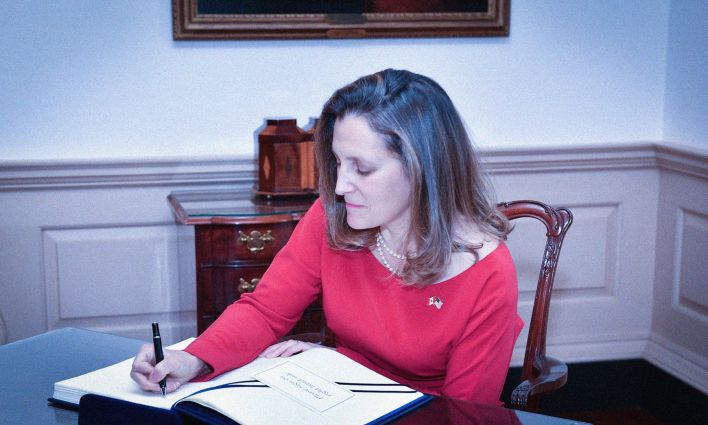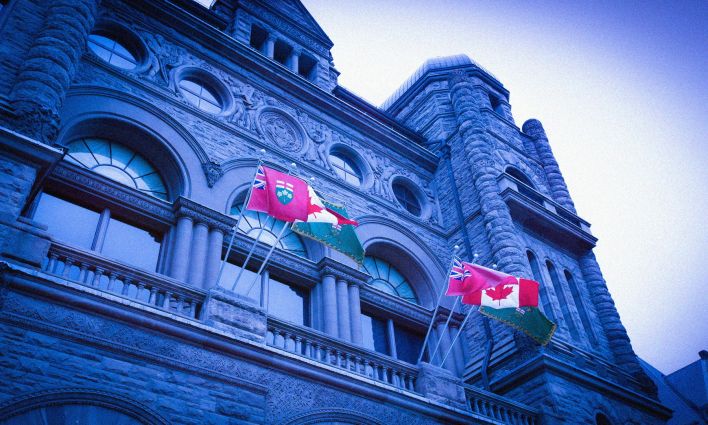For many tenants, renting is not a phase. Either they earn too much to qualify for social housing, they earn too little to buy a home, or they don’t want to own one. Out of choice or lack thereof, they will rent from private landlords for many years to come. Debates about housing affordability often overlook these tenants; that was certainly the case in last year’s federal election. Is this Ontario election any different?
Luckily, it is.
All parties have made their visions for rental housing clear. These visions differ significantly, which is refreshing at a time when parties seem to repeat similar sound bites on so many issues.
The Progressive Conservative Party made its position clear four years ago when it scrapped rent controls on new builds. As a result, there is no limit to how much rents can increase each year in units occupied for the first time after November 15, 2018. Renting one of these units can feel like signing a blank cheque to your landlord.
In response to COVID-19, the PC government froze rents in 2021. Increases returned in 2022, despite the lingering pandemic and ongoing economic shocks. The government also imposed two temporary eviction bans during the first and third wave of the pandemic. Following the bans, hasty online eviction hearings dealt with the case backlog in short order but gave tenants little chance to defend themselves.
The 2022 Budget, the PC Party’s de facto platform, has nothing in it for private market renters.
The Liberal Party platform commits to “reinstating rent control everywhere in Ontario.” It also vows to improve conditions for tenants in multi-tenant housing (once called rooming housing), much of which remain illegal and unsafe. In Toronto, where they are legal only in parts of the city, advocates have demanded their regularization for years. In the nearly eight years since he was first elected mayor, John Tory postponed this agenda item several times, never mustering the political courage to face local opposition from people who don’t want multi-tenant housing in their neighbourhood. It’s nice to see a provincial party willing to take on the issue.
Insufficient elevator access in apartment buildings also made it into the Liberals’ housing platform. Hearing any party express concern about accessibility is a welcome change.
Like their federal counterparts, the Ontario Liberals talk about rent-to-own agreements as a “path to ownership” for renters. I’m skeptical. This sounds like another policy fad that might help a handful of families, at best.
Instead of disingenuously promoting the white-picket-fence dream to these families, parties who hope to win government would do better to focus on real measures to improve rental housing.
The NDP housing plan goes considerably further than the Liberals’. In addition to reinstating rent controls, the party promises to scrap “vacancy decontrols.” This means landlords would no longer be allowed to hike up rents between tenancies: new tenants would pay what the last tenant paid. Scrapping vacancy decontrols would cool down prices across the market. It would allow tenants to take advantage of one of the greatest benefits of renting—the ability to relocate and easily adapt to work and family needs—since the price gap between occupied and vacant units would narrow. It would also remove landlords’ financial incentive for evictions, including renovictions.
Still on rents, the NDP plan promises to crack down on phony applications for above-guideline increases (AGI). Tenant unions spend a lot of time and energy fighting AGIs. Strong regulation could free up time to other tasks, like fighting evictions and organizing more buildings.
The NDP is also committing to protect tenants impacted by redevelopments, ensuring their rights to return to their home are upheld. The party plans to “fix the Landlord and Tenant Board,” including restoring the right to in-person hearings. The NDP would also reverse cuts to legal aid assistance, which, among other things, helps tenants to take on landlords. (The Liberals promise the same but don’t link it to housing). Through something called a Cooling Strategy, the party would ensure miser landlords don’t save on air conditioning at the cost of tenants’ health.
As a whole, the promised regulations recognize that tenants have to defend themselves against current practices and institutions that serve the interests of landlords. The next step for the party would be to vow to recognize collective bargaining rights for tenants.
The Green Party of Ontario also came through for private market tenants. Its platform includes many of the same proposals as the NDP’s, namely, reinstating rent controls on all units, scrapping vacancy decontrols, further regulating AGIs, and cracking down on renovictions. On the Landlord and Tenant Board (LTB), echoing demands from tenant groups, the Greens commit to eliminating forced online hearings. Other LTB-related planks are less bold, focused on “adding transparency” and addressing delays so that “landlords and tenants have timely access to justice.” Like the NDP, the Greens could have gone further in articulating tenants’ collective bargaining rights.
According to the 2018 National Housing Survey, 30 per cent of Ontario households rent. Four per cent live in social or affordable housing. Two per cent are waitlisted for social or affordable housing; they may, at some point, be able leave the private market. Four per cent have household incomes similar to the income of families that recently bought their first homes; if they have enough savings for a down payment, or generous parents who do, and want to buy a house, which not everybody does, they could move into home ownership sometime in the near to intermediate term.
The remaining 20 per cent of households are likely to rent regular private market units for many years to come. Instead of disingenuously promoting the white-picket-fence dream to these families, parties who hope to win government would do better to focus on real measures to improve rental housing.
For tenants, the Liberal Party, the NDP, and the Greens offer more in their platforms than the PC Party. And contrary to last year’s federal election, the Liberal and the NDP platforms are clearly distinct. The NDP goes further, promising changes that would have a direct and substantive impact on the lives of people who rent. The Greens also promise many of those changes.







